We love our gadgets at Ausdroid and an area of interface with our computers that’s often overlooked is the keyboard. I find myself getting aggravated at the generic “corporate” style keyboards that the likes of Dell ship with their PCs because, well, they’re horrible. The travel isn’t conducive to good typing rhythm, and the touch is often inconsistent. So getting hands on with something like the HyperX Alloy Origins Core is quite a treat.
This a bit of a contrast to the last keyboard we had a look at in the HyperX Origins 60, in that — the review model — has Blue mechanical switches, not red: So the touch and feel is quite different requiring a bit more force to activate the keys and a very clicky, definitive feel to each keypress.
The Alloy Origins Core won’t give you much change from $200.00 regardless of whether you pick one up with Red switches or the more “clicky” blue switches. Regardless of the switches you choose, you’ll get a nice looking and very solid keyboard that’s well presented and has plenty of RGB “gamer style” flare if you want to use it.
Features of the Alloy Origins Core
A keyboard is a keyboard, right? Well, yes and no…
The Origins 60 we looked at last week is a 60% form factor keyboard where this one is tenkeyless (no number pad, but otherwise has a full suite of keys) but otherwise full size. Depending on your use case, this could be a real advantage over a 60% form factor or even a full sized keyboard.
I like the versatility of having a detachable cable because you can leave cables in place and take your favourite keyboard with you. You’ve also got the advantage of space-saving by being able to unplug and hide your keyboard away if you’re working with limited space.
The pre-programmed profiles on this are colourful, with a real focus on gaming about them. There are three of them, a rainbow wave pattern, all keys rolling through available colours and a mode that reacts to keypresses with a wave of colour rolling out from the pressed key.
There is no mistaking the clear and present gaming focus in the construction of this keyboard. We’ve already covered the RGB presentation, but there’s a couple of other factors including the blue mechanical switches and very solid (900 grams) build.
The Alloy Origins Core is a tenkeyless build and for gamers, that’s perfect. The function keys and other navigation keys and control (ins, home, del etc) are there though. While this does open up a bit more functionality, in the case of the mechanical blue keys, I can’t help but feel that this is somewhat a one-trick pony: Gaming or gaming. I know if I took this into my office, I would be beaten — I work in an open plan office — with it repeatedly because of the noise it creates when you’re typing.
I’m also pretty confident that anyone wanting to use this for any sort of calculations would be frustrated quickly with the lack of a number pad. The look and feel, particularly if you turn the RGB off, wouldn’t be out of place in an office environment though.
So who will buy this keyboard?
I’d like to say this one is open slather, but it’s already been covered that there are issues with providing a keyboard like this in office areas. They are noisy, they are bright and if you’re not used to RGB setups, it can be really distracting. The Red switch option could be a bit of a different story, particularly as I feel this would really go the distance: For nearly $200 you’d expect it to last quite some time, and rightly so!
In the recent review of the Alloy Origins 60, we covered the difference in feeling between Red and Blue switches (the two most common on mechanical keyboards):
The differences between the two are that the Red Switches are a softer touch and require less force (45 grams) to activate. This results in — while typing — is a smoother, more fluid feeling to the keys and when you get in the zone, a better typing rhythm.
Control Software by HyperX
In reviews of any equipment that has RGB settings, it would be remiss not to at least mention the software. While the pre-programmed profiles are often very much to the liking of users, there is a pathway to change your lighting, key mapping and (very important for some games) macros.
Suffice to say that the Ngenuity software from HyperX is solid, it’s not perfect but what is? The important thing is that it doesn’t take an IT degree to install it, understand it or achieve what you want to out of changing any of the above mentioned features. It’s pretty user friendly and does look the part on screen.
What else is there to know?
For the target market, this is an exceptionally good piece of hardware. It’s not cheap, but it is also far from outlandishly expensive and the aircraft aluminium body feels solid enough to take an absolute beating.
Given the connection to the keyboard is USB-C, the throughput is unlikely to be challenged by just typing or gaming. Why not (I know I mentioned this in the Origins 60 review too) put in a USB hub for easier connectivity if your PC is lacking ports?
If you’re not keen on the super clicky switches, you can get a red switch option which is smoother and quieter. So I feel like HyperX have in fact covered their bases pretty well with the options they’ve presented to users.
Is the HyperX Alloy Origins Core worth the money?
The experience you get with a mechanical keyboard is consistent and reliable. It does take some adjusting from a standard keyboard and in the early stages, justifying a $200 outlay versus $40 – $100 for a reasonable to good quality option can be difficult but — from personal experience — one you won’t regret. In this case, while I don’t dislike the keyboard itself for my usage case, Blue switches aren’t right for me except on weekends for gaming.
HyperX delivers really solid hardware, not just in the physical weight but design and choice of materials. I’m confident to say that whatever keyboard you choose from HyperX, it will go the distance with quality keys, switches and other components. All of this combined means that the user experience will continue to be a good one for a long period of time, making the $195 outlay a long term proposition.
Despite the best intentions, I just can’t in good conscience say that this is a dual purpose keyboard. It’s purely and simply a gaming device: The keys are so good with consistent press feedback but if you’re in an office, the noise alone from typing may result in you getting hurt by coworkers. Add to that, if you do any number work – the lack of the number pad will probably drive you bonkers.
HyperX has delivered an excellent piece of hardware that really looks the part for gamers. The programmable nature of the keyboard profiles means that you can adjust the visuals and some of the controls on the keyboard. The RGB setup is very nice, with the lighting being prominent without being distracting or dominant in your play space.
Would I buy one?
Because I work from home several days per week and need a keyboard that has a bit more function than this does, personally, no I wouldn’t buy one. But that doesn’t mean that you shouldn’t. If I was purely purchasing one for my relaxation space ie. my gaming pc, then yes – I’d consider it but I need something more versatile.
I wouldn’t hesitate, however, to recommend this as a viable alternative to some of the better known brands like Corsair and Razer keyboards if you’re looking for the features, but perhaps on a bit of a tighter budget.

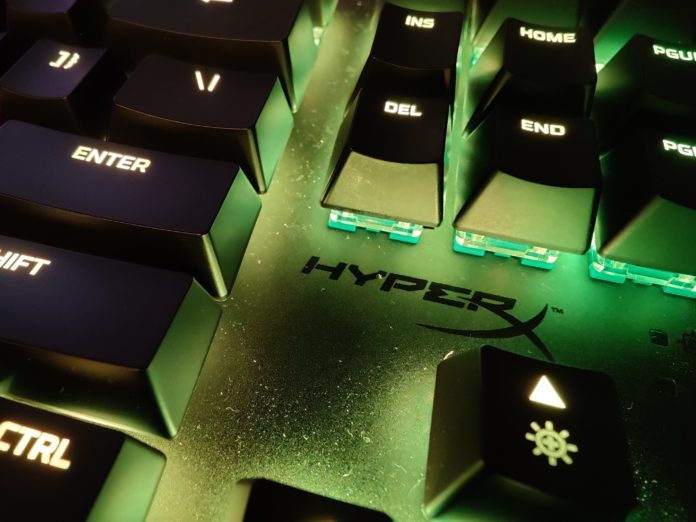
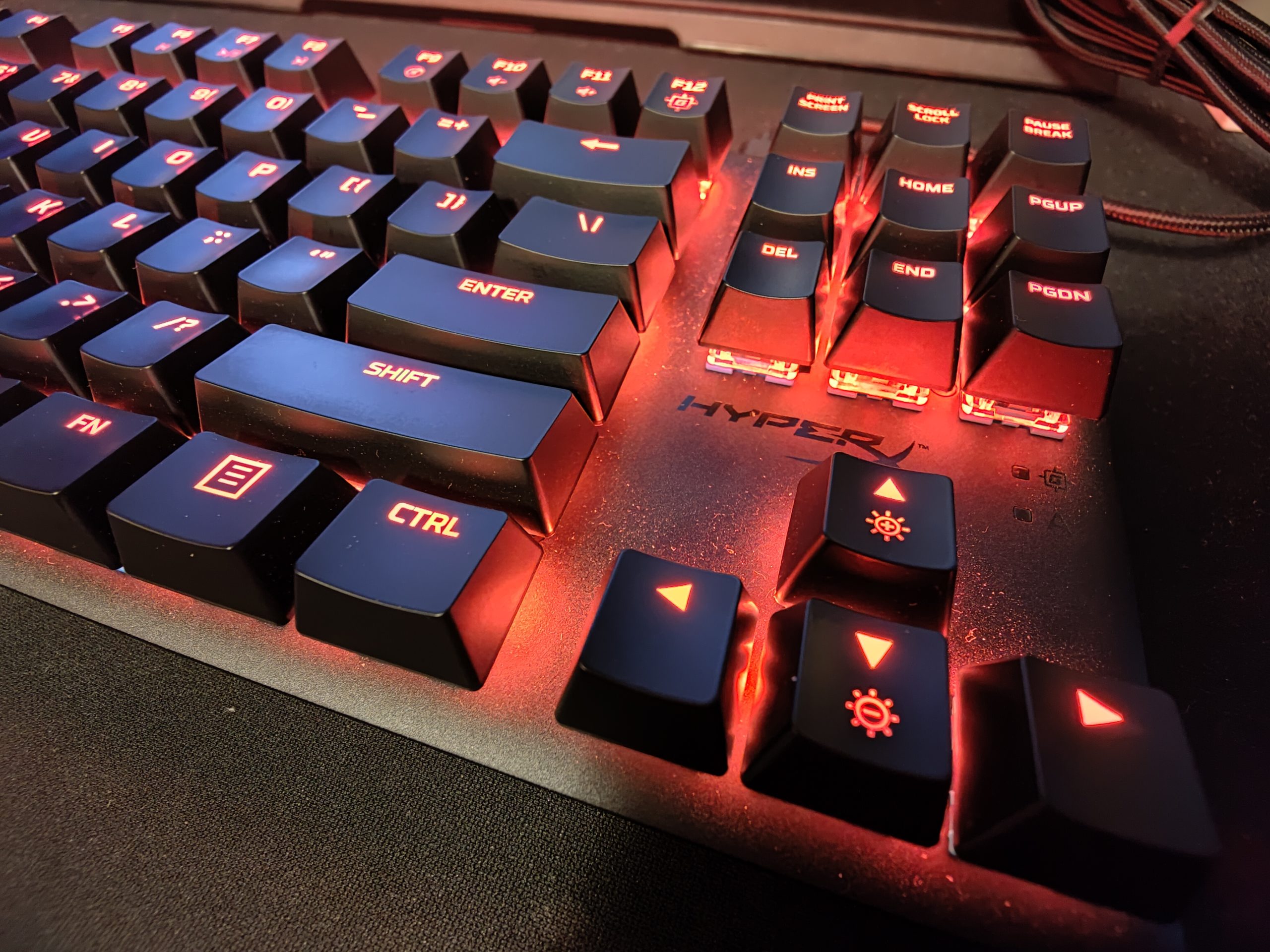

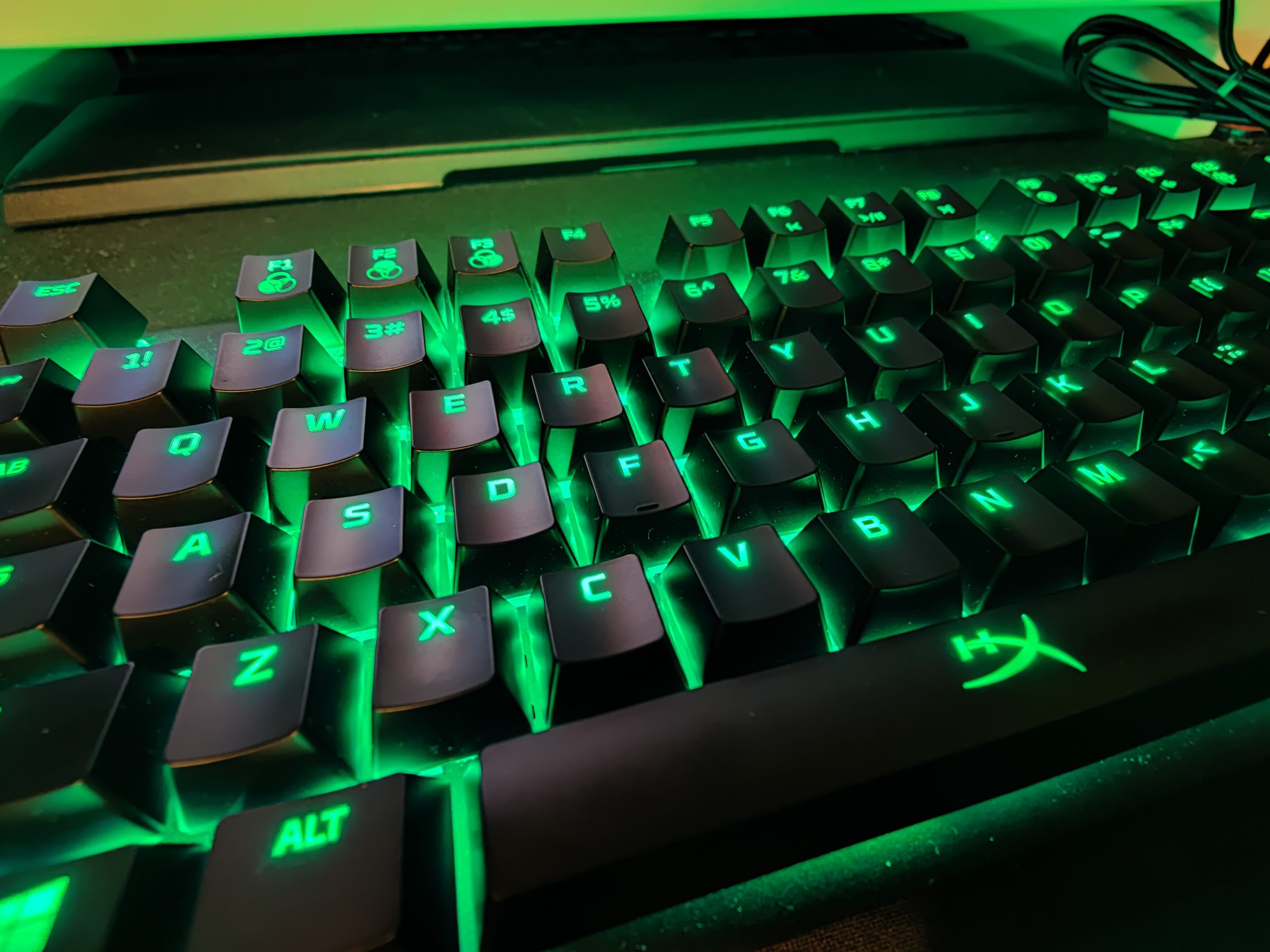
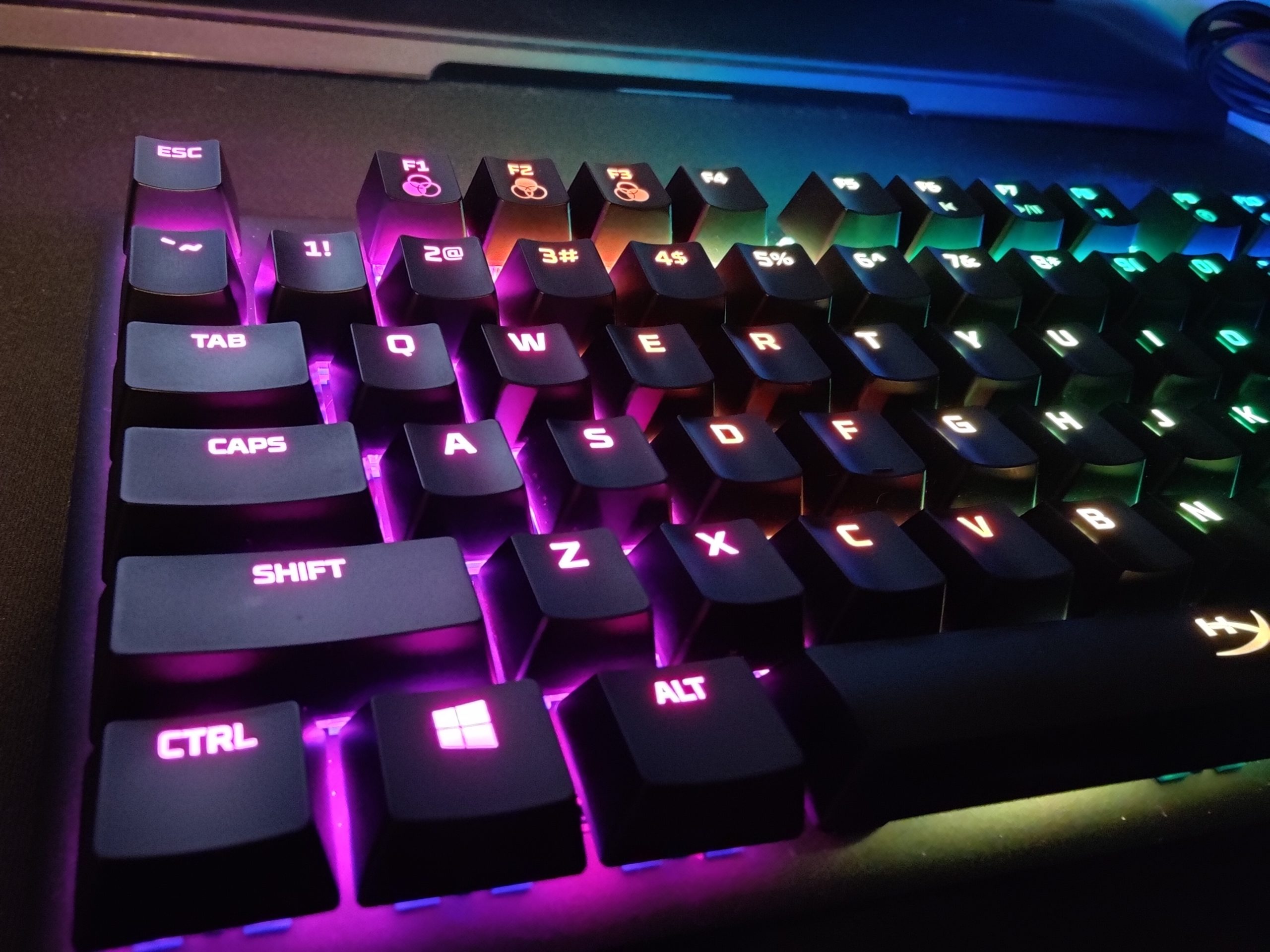
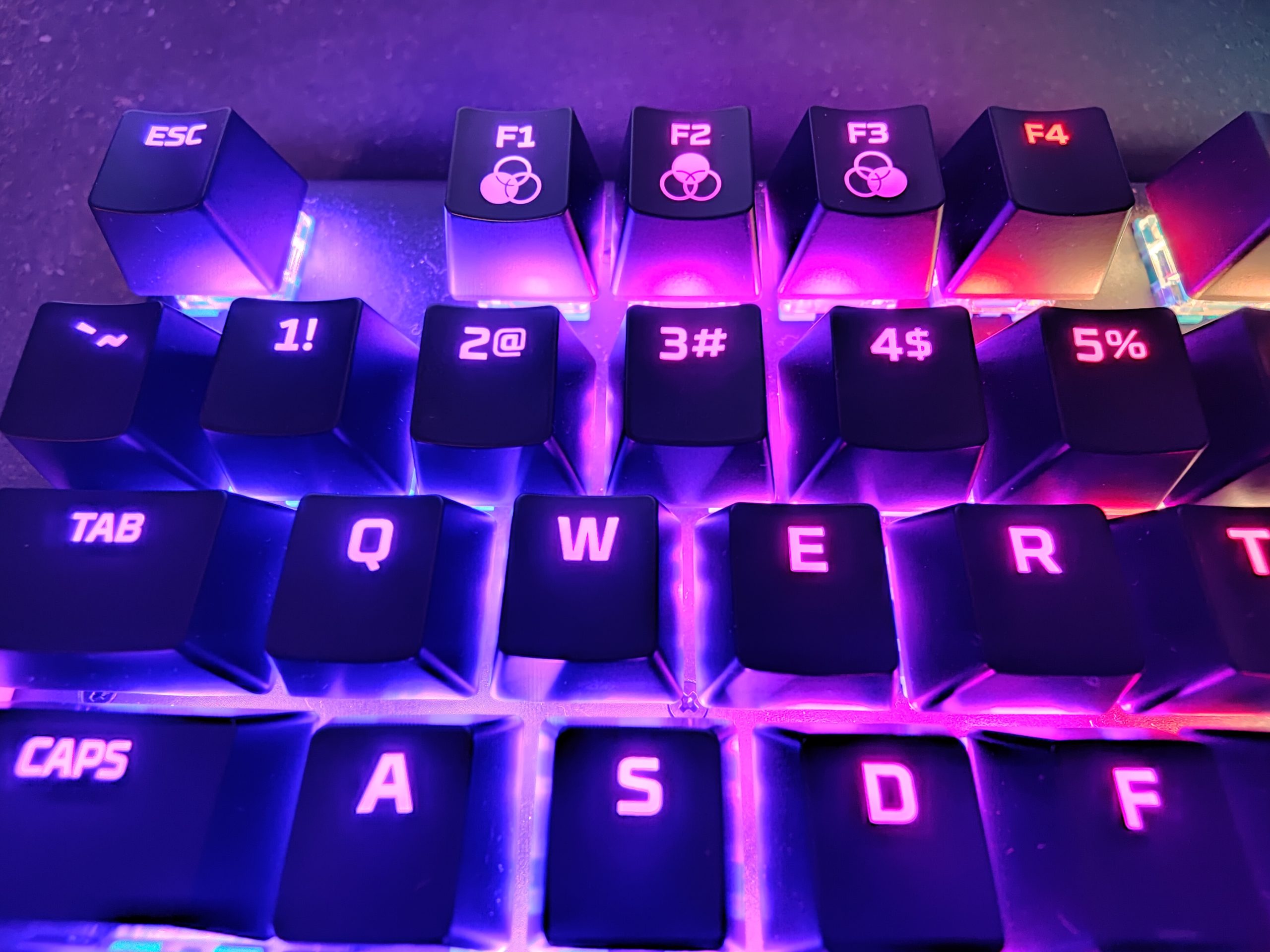



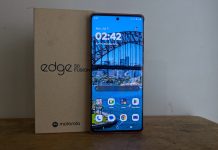
I think the real problem for this keyboard, in a office situation, would be the lack of a numberpad.